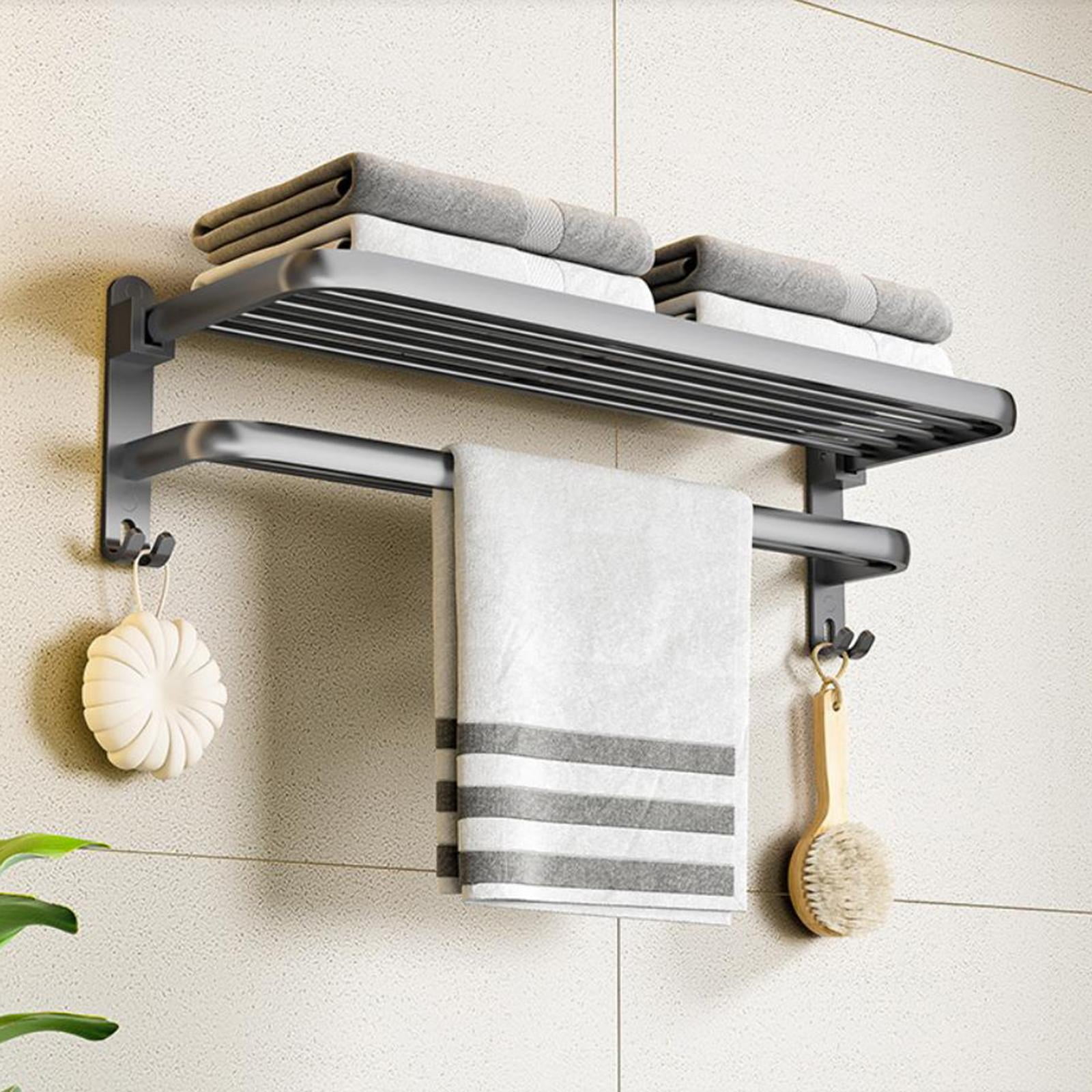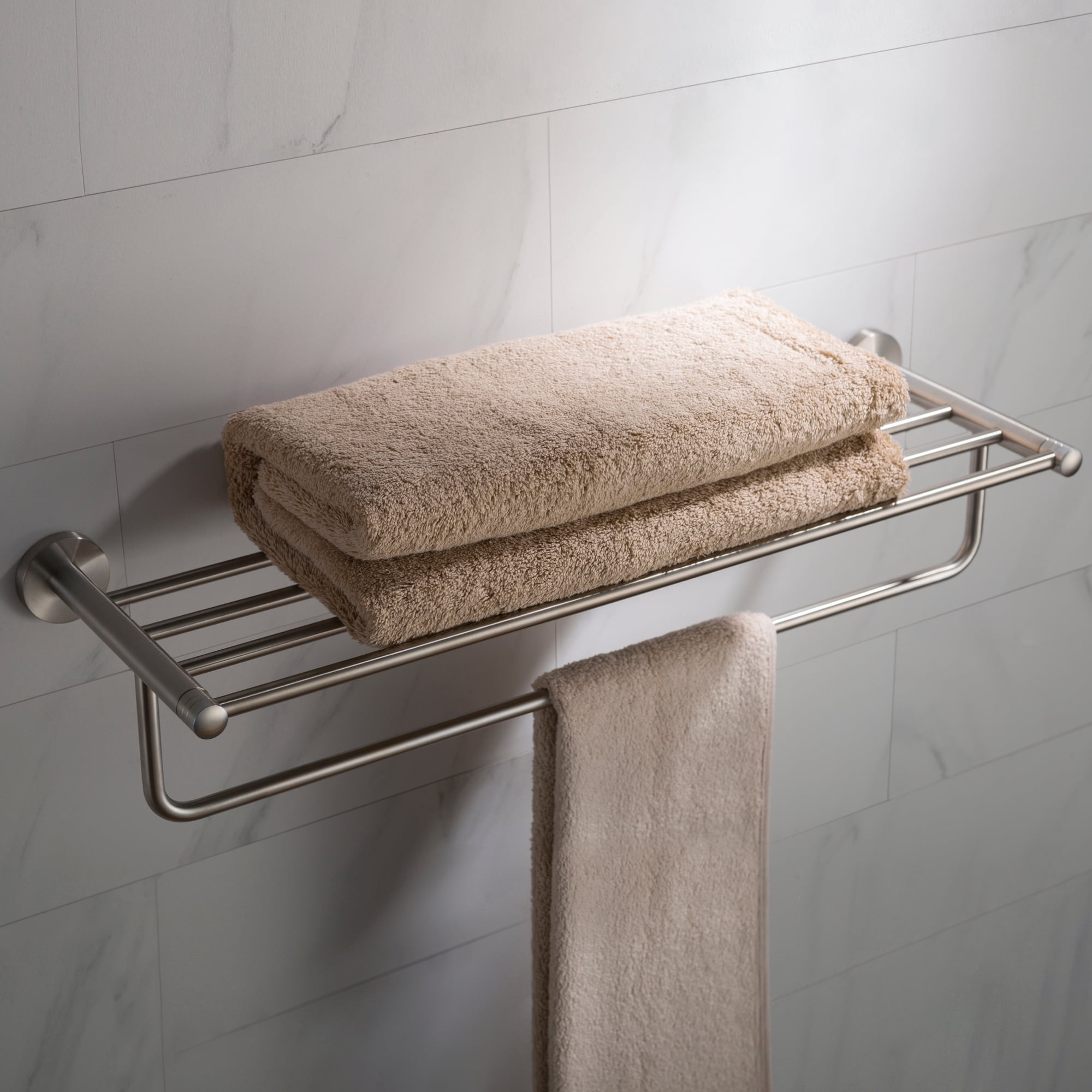Understanding the Need for Replacement: Bathroom Towel Rod Replacement

Towel rods, those humble fixtures in our bathrooms, might seem like minor players in the grand scheme of things. But let’s face it, a broken or wobbly towel rod can turn your bathroom into a comedy of errors, especially when you’re in a rush and need a quick towel grab.
Bathroom towel rod replacement – So, how do you know if your towel rod is on the verge of a bathroom meltdown? Let’s dive into the telltale signs that your towel rod needs a replacement.
Signs of a Worn-Out Towel Rod
Before your towel rod turns into a comedic prop, it’s wise to recognize the warning signs. A worn-out towel rod might display a few telltale symptoms.
- Wobbling or loose: If your towel rod is swaying like a willow in the wind, it’s time to call in the reinforcements. A wobbly towel rod can be a safety hazard, especially when you’re trying to hang a heavy towel.
- Rust or corrosion: If your towel rod looks like it’s been through a rusty battle, it’s probably time to say goodbye. Rust can weaken the metal and make the rod prone to breakage.
- Cracks or chips: A towel rod with cracks or chips is a recipe for disaster. These imperfections can weaken the rod and make it more likely to break under the weight of a towel.
- Discoloration or fading: While not a safety hazard, a discolored or faded towel rod can make your bathroom look like it’s seen better days.
Potential Safety Hazards of a Faulty Towel Rod
Think of your bathroom as a sanctuary, a place where you can unwind and relax. But a faulty towel rod can turn your oasis into a danger zone.
- Falling towels: A wobbly towel rod can cause your towel to fall unexpectedly, leaving you with a soggy mess on the floor. This can be especially dangerous if you’re trying to get out of the shower quickly.
- Broken rod: A broken towel rod can be a real pain, literally. If the rod breaks while you’re hanging a towel, you could end up with a nasty cut.
- Unstable fixture: A loose or unstable towel rod can be a tripping hazard. This is especially dangerous for children and elderly individuals who might not be able to react quickly enough to avoid a fall.
Impact on Bathroom Aesthetics
A towel rod is more than just a place to hang your towel. It’s also a design element that can make or break your bathroom’s overall look. A damaged or outdated towel rod can detract from the overall aesthetic of your bathroom.
- Visual clutter: A wobbly or rusty towel rod can create a sense of disarray and make your bathroom look cluttered.
- Color mismatch: A discolored or faded towel rod can clash with the color scheme of your bathroom, creating an eyesore.
- Style incompatibility: A dated towel rod can make your bathroom look outdated and detract from the overall style of your decor.
Choosing the Right Replacement

Replacing your towel rod is a great way to update your bathroom and give it a fresh look. But with so many options available, it can be overwhelming to know where to start. Don’t worry, we’ll help you navigate the world of towel rod replacement with some tips and tricks.
Towel Rod Materials, Bathroom towel rod replacement
The material of your towel rod is a big decision. It affects both the look and durability of your bathroom fixture. Let’s take a look at some popular options.
- Stainless Steel: This is a popular choice because it’s durable, rust-resistant, and comes in a variety of finishes. It’s a classic choice that’s easy to clean and can withstand the daily wear and tear of a bathroom. However, it can be a bit more expensive than other options.
- Brass: Brass is a beautiful and durable material that’s often used in high-end bathrooms. It’s known for its warm, golden tone and can be polished to a high shine. It’s also very resistant to corrosion. However, brass can be more expensive than stainless steel and requires more maintenance to keep its shine.
- Chrome: Chrome is a very popular choice for bathroom fixtures because it’s shiny, reflective, and easy to clean. It’s also relatively affordable and durable. However, chrome can be susceptible to scratches and dents, so it’s important to handle it with care.
Mounting Methods
Now that you’ve chosen your material, it’s time to decide how you want to mount your towel rod. There are two main options:
- Screw-in: This is the most traditional and secure method. You’ll need to drill holes in the wall and use screws to attach the towel rod. This method is best for solid walls, such as concrete or brick. However, it can be a bit more difficult to install than other methods.
- Adhesive: Adhesive mounting is a great option for walls that can’t be drilled, such as drywall or tile. The adhesive is applied to the back of the towel rod and then pressed firmly against the wall. It’s a much easier installation process, but it may not be as strong as screw-in mounting.
Choosing the Right Size and Style
The size and style of your towel rod should complement the overall design of your bathroom. Consider the following:
- Size: Measure the width of your towel bar. If you have a smaller bathroom, a shorter towel bar might be more appropriate. For larger bathrooms, you can go with a longer towel bar.
- Style: Towel bars come in a variety of styles, from modern to traditional. Choose a style that complements the other fixtures in your bathroom.
The Replacement Process

Now that you’ve chosen your new towel rod, it’s time to get your hands dirty and replace the old one. Don’t worry, it’s not rocket science, but it does require some elbow grease and a dash of caution. Let’s break down the process, step by step, so you can conquer this DIY project like a pro.
Removing the Old Towel Rod
Before you can install your new towel rod, you need to remove the old one. This is a straightforward process, but it’s essential to do it carefully to avoid damaging the wall.
- Gather your tools: You’ll need a screwdriver, a wrench, and a level. A pair of pliers might also come in handy if the screws are stubborn.
- Locate the mounting brackets: The towel rod is typically attached to the wall with two mounting brackets. Find these brackets and inspect them carefully. If they’re rusty or damaged, you’ll need to replace them as well.
- Remove the screws: Using your screwdriver or wrench, carefully remove the screws that hold the mounting brackets to the wall. If the screws are stuck, try using a little bit of WD-40 to loosen them up.
- Remove the towel rod: Once the screws are removed, gently pull the towel rod away from the wall. If it’s stuck, you can use a gentle rocking motion to loosen it. Be careful not to apply too much force, as this could damage the wall.
Installing the New Towel Rod
Now that the old towel rod is out of the way, it’s time to install the new one. This is a relatively simple process, but it’s important to do it correctly to ensure that the new towel rod is secure and level.
- Prepare the wall: If the old mounting brackets left any holes in the wall, you’ll need to fill them in with spackle or putty. Allow the spackle to dry completely before proceeding.
- Install the mounting brackets: Hold the new mounting brackets against the wall where you want the towel rod to be. Use a level to ensure that the brackets are perfectly horizontal. Then, use your screwdriver or wrench to screw the brackets into the wall. Make sure the screws are long enough to penetrate the wall securely.
- Attach the towel rod: Once the mounting brackets are in place, slide the new towel rod onto the brackets. Make sure the rod is securely attached to the brackets before letting go.
Safety Precautions
Remember, safety first! Here are some important precautions to take when replacing your towel rod:
- Wear safety glasses: This will protect your eyes from flying debris. If you’re using a power drill, make sure to wear earplugs to protect your hearing as well.
- Be careful with sharp tools: Screwdrivers and wrenches can be sharp, so handle them with care. Be mindful of your surroundings and avoid using them in crowded areas.
- Don’t overtighten screws: Overtightening screws can damage the wall or the mounting brackets. Tighten the screws just enough to secure the brackets in place.
- Take breaks: If you’re working on a large project, take breaks every hour to avoid fatigue. Fatigue can lead to mistakes and injuries.
